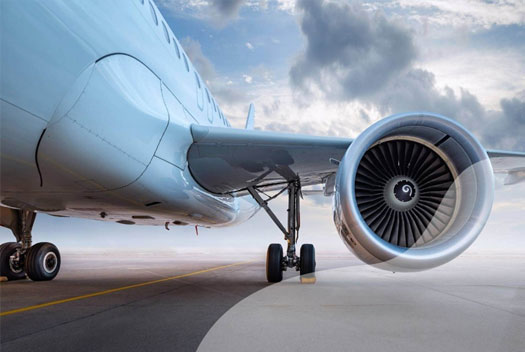 Part performance is critical, especially in the aerospace industry, where standards are exceptionally stringent. High-stress conditions, corrosive environments, part longevity, and demanding specifications to industry standards make manufacturing aerospace components challenging.
Part performance is critical, especially in the aerospace industry, where standards are exceptionally stringent. High-stress conditions, corrosive environments, part longevity, and demanding specifications to industry standards make manufacturing aerospace components challenging.
Parts used in aerospace applications must be able to perform in harsh conditions, have a long cycle life, and be extremely reliable. In commercial or military aircraft, for example, liquids and gases must flow smoothly through pipes, tubes, and hoses. For fittings, valves, and nozzles that function with metal-to-metal contact, electropolishing creates a smoother surface with tighter tolerances, free from surface flaws, and extends component life. Unlike mechanical polishing, the electropolishing process creates a uniform, repeatable surface finish, decreasing the surface roughness (lowering the Ra value) by up to 50%. Strict standards and requirements must be met under AMS 2700 for passivation to satisfy aerospace requirements. Electropolishing under ASTM B912 also achieves passivation of stainless steel parts for higher levels of corrosion resistance.
Electropolishing aerospace components provides the precise smoothness and finish required for critical aerospace components, including:
| Gears | Fittings |
| Pinions | Fasteners |
| Housings | Brackets |
| Shafts | Flanges |
| Springs | Ball screws |
| Nozzles | Ball nuts |
| Seals | Reflectors |
| Bushings |
Electropolishing Benefits for the Aerospace Industry:
- Corrosion resistance: An ultra-smooth surface eliminates initiation sites for part corrosion, aiding long-term part performance. Removing a thin, uniform layer of surface material creates an exterior surface that inhibits corrosion advancement and increases part longevity and integrity. The chromium-rich, passive surface will delay corrosion in various alloys.
- Microfinish improvement: Micro-imperfections and defects, common initiation sites for cracks, are eliminated with electropolishing. Various types of machining, stamping, forming, and welding leave imperfections on the prototype surface. Electropolishing is effective for creating a smooth microfinish on simple or complex geometries and delicate parts.
- Deburring: Parts fit and function as designed, free of friction created by microburrs left by manufacturing. The process improves part integrity by removing a marginal quantity of metal from parts to maintain precise sealing surfaces or other critical part features.
- Ultracleaning: Aerospace parts are free of surface contaminants, debris, and foreign materials.
- Fatigue life improvement: Aerospace parts can achieve a higher level of fatigue life improvement, whether the part was machined or stamped. Electropolishing removes manufacturing defects such as micro-cracks, pits, and other surface anomalies that can lead to premature part failure.
